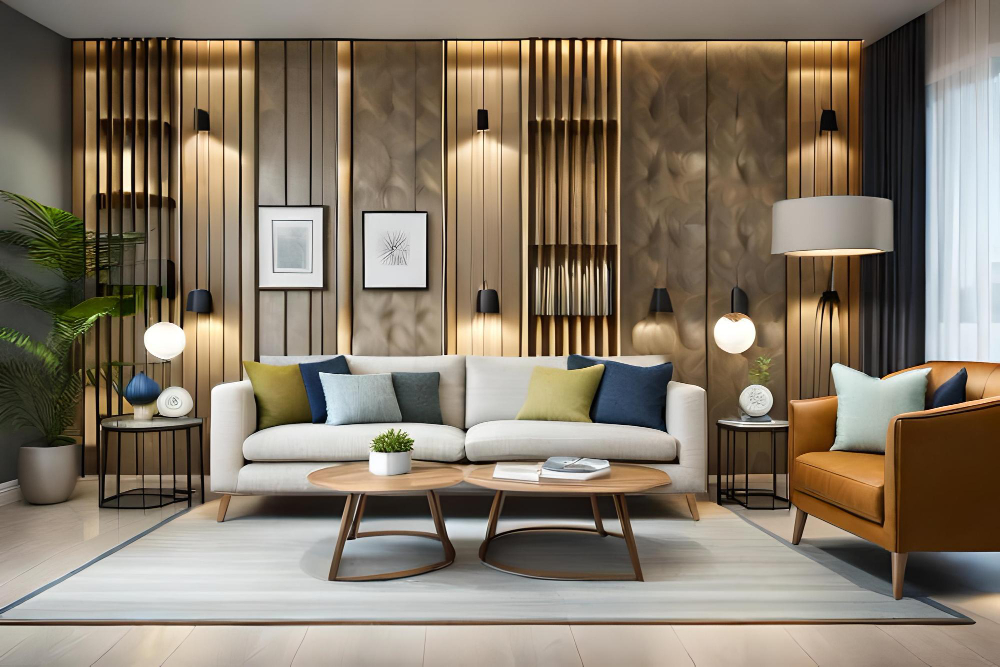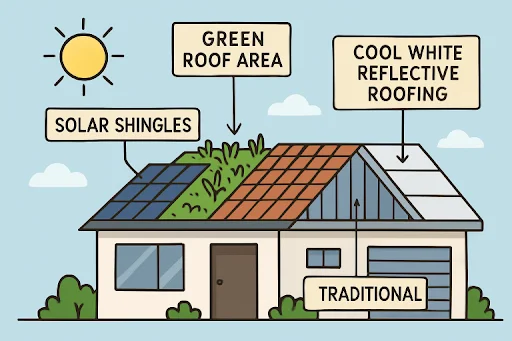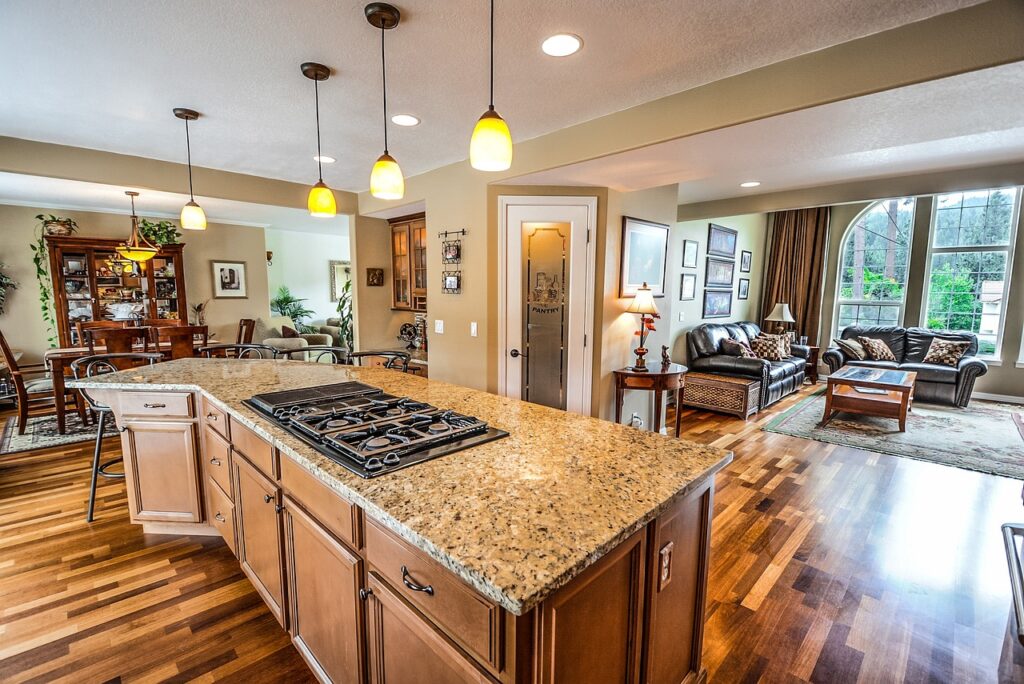Innovative Interiors: Redefining Spaces with Modern Design

Modern design in interior spaces represents a dynamic evolution beyond traditional aesthetics. It’s a field constantly redefining the way we perceive and utilize our surroundings. Beyond its focus on clean lines and minimalism, modern interior design embodies a fusion of functionality and aesthetic appeal. This approach integrates cutting-edge technology, introducing smart solutions that enhance the usability of spaces.
These innovative design concepts go beyond the visual aspect, aiming to create environments that resonate with both practicality and visual allure. The adaptability of modern design lies in its capacity to incorporate new ideas and advancements, creating beautiful and functional spaces.
So, stay with us as we delve into the transformative world of modern interior design.
Smart Technology Integration
One of the key aspects of modern design is the integration of smart technology. Incorporating smart home systems allows for seamless control over lighting, temperature, security, and entertainment. From voice-activated assistants to automated blinds and thermostats, these elements elevate the convenience factor and also enhance the overall ambiance of a space. Here are some practical ways to incorporate smart technology:
- Voice-Activated Assistants: Incorporate voice-activated assistants like Amazon’s Alexa, Google Assistant, or Apple’s Siri to control various aspects of the space, such as lighting, music, temperature, and even appliances.
- Automated Blinds and Curtains: Install automated blinds or curtains that can be scheduled or controlled remotely. These not only regulate natural light but also enhance privacy and contribute to energy efficiency.
- Smart Thermostats: Utilize smart thermostats that learn usage patterns to optimize heating and cooling, ensuring comfort while reducing energy consumption.
- Security Systems: Integrate smart security systems with features like motion sensors, smart locks, and cameras accessible via smartphones or tablets, enhancing safety and peace of mind.
- Entertainment Systems: Invest in smart entertainment systems that sync with various devices, allowing seamless streaming, music playback, and home theater experiences.
These technological integrations streamline daily tasks and elevate the overall functionality and ambiance of the space, aligning it with contemporary design preferences.
Flexible and Multipurpose Furniture
Innovative furniture design plays a very important role in modern interiors. Opting for modular or multifunctional furniture pieces allows for flexibility in space utilization.
Sofa beds, expandable tables, and storage-integrated furniture provide the versatility needed for smaller spaces, ensuring both comfort and practicality.
Sustainable Materials and Practices
A sustainable approach has become synonymous with modern design. Using eco-friendly materials like reclaimed wood, recycled metal, or low-VOC paints not only reduces the environmental impact but also adds a unique character to the space.
Additionally, integrating energy-efficient appliances and installing proper insulation contribute to a sustainable and cost-effective environment.
Embracing Natural Light
Utilizing natural light is a cornerstone of modern interior design. Maximizing windows and incorporating light-reflective surfaces such as mirrors or glossy finishes can make spaces feel larger and more inviting. This approach reduces the reliance on artificial lighting and also creates a connection with the outdoors, promoting a sense of well-being.
Integration of Art and Statement Pieces
Incorporating art and statement pieces adds personality and depth to modern interiors. Whether it’s a striking sculpture, a vibrant painting, or designer furniture, these elements serve as focal points, elevating the overall aesthetic appeal of the space. They provide a sense of uniqueness and individuality, making the interior design more engaging.
Collaboration with Professionals
Partnering with a modern architecture firm can bring a fresh perspective to interior design. Collaborating with professionals across diverse global cities like Paris, Tokyo, New York City, Cape Town, Sydney, and Zurich brings a myriad of advantages to interior design.
Each location, be it Paris with its classic elegance, Tokyo with minimalist functionality, New York City’s urban sleekness, Cape Town’s harmony with nature, Sydney’s focus on indoor-outdoor living, or Zurich’s avant-garde design concepts and keen spatial understanding, contributes a unique perspective. Working with professionals in these varied locales promises innovative, culturally infused, and uniquely inspired spaces that transcend conventional design boundaries, offering a tapestry of creative possibilities.
Working with a modern architecture firm in Zurich can offer numerous benefits. Here are some advantages of collaborating with professionals:
- Expertise: Professionals bring in-depth knowledge and skill sets honed through education and experience.
- Innovative Perspective: Their fresh outlook can introduce avant-garde design concepts, pushing boundaries creatively.
- Cutting-Edge Techniques: They often leverage the latest technologies and methods to create unique and modern spaces.
- Spatial Understanding: Professionals possess a deep understanding of spatial dynamics, optimizing layouts for functionality and aesthetics.
- Holistic Approach: They merge architectural principles seamlessly with interior design, creating cohesive and harmonious spaces.
Final Thoughts
Modern design is a constantly evolving realm where creativity meets functionality. By embracing technology, sustainability, artistic touches, and seeking expertise, spaces can be transformed into dynamic, inviting environments that cater to the needs of today’s lifestyles while anticipating the trends of tomorrow. Remember, implementing these tips doesn’t always require a complete overhaul. Small changes can make a significant impact, allowing spaces to evolve and adapt to modern design sensibilities.

6 Tips To Unlock New Business Opportunities With My Aged Care Registration

The Hidden Business Power of Storytelling Through Books

Diamond Painting Apps & Digital Tools for 2025 Artists

Accelerating drug discovery through the DEL-ML-CS approach

AI in Marketing Is No Longer a Buzzword — It’s the Strategy

Innovative Roofing Solutions for Modern Homes

Home Depot Rival Closing: Impact on the Home Improvement Retail Industry

What Is Stormuring? Complete Guide to the Versatile Waterproof Repair Mortar








